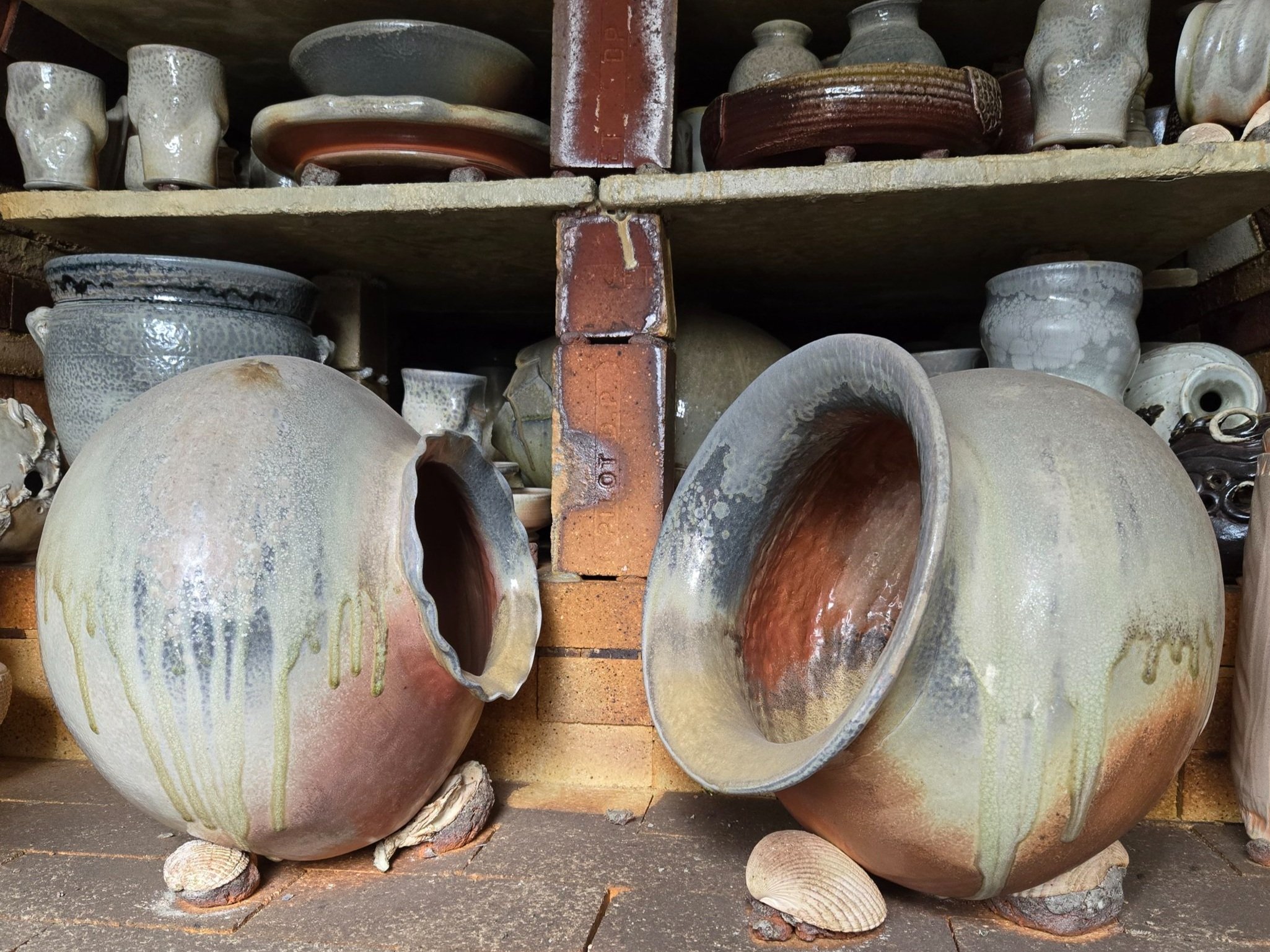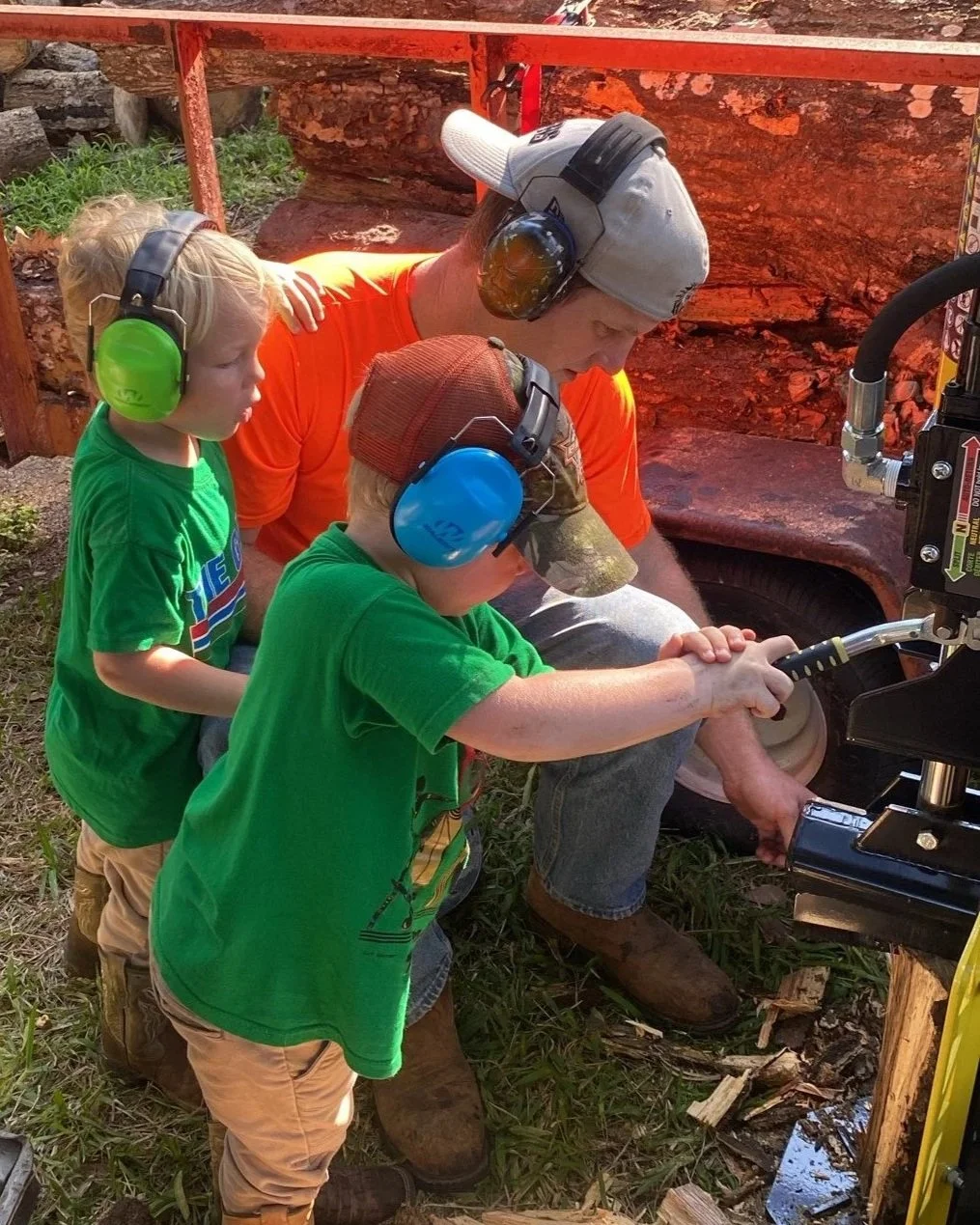The St. Augagama
It all started when…
Rooted in the discovery of porcelain in Jingdezhen, China, kilns have been fired with wood for millennia. Originally, the accumulation of wood ash was undesirable and something to be avoided. As time has progressed and techniques have changed, combinations of clay and ash have been found to create their own glaze at high temperatures for extended time. In a single firing, we fire for approximately 80 hours consuming just shy of 4 cords of wood to take advantage of the accumulation of ash-glaze.
Three SWS Woodfire Plates fired upside down and raw in the front stack.
Our Clay
We use a blend of local St. Johns County clays and a commercially mixed recipe of our own. This porcelaneous recipe was developed from research I conducted in grad school based on a CoorsTek analysis of the local clay I was harvesting in western Kansas. It’s a cream-firing, highly plastic throwing body, with a small percentage of fine grog added to lend some tooth. The high silica content in the body facilitates ash accumulation and performs exceptionally well in fly ash and sodium atmospheres. The local clay, glazed with locally harvested wood ash and seawater from the bay makes each work intimately connected to this place.
Two SWS Woodfire Clay Jars from the inaugural firing, back of the first step.
Built in 2024 and derived from the Japanese tradition of an Anagama (translating to “Cave Kiln”) style of firing, the St. Augagama is approximately 20 feet long with an interior stacking space of 140 cubic feet in the main chamber. With a firebox on the east end and chimney on the west, the ash from the burning wood is drawn through the pottery and deposited onto the surface of the ware. This creates the glaze layer through the fluxing power of the ash on the silica in the clay. A unique feature of our kiln is a secondary ‘sutema” chamber between the main chamber and the chimney. This second chamber acts as an after-burner and combusts any remaining smoke in the effluent making the kiln overall a smokeless wood kiln! An added feature of the sutema chamber is the ability to treat it as an entirely separate atmosphere. This allows us to salt the kiln with an application of seawater from the bay while the kiln is at top temperature.
SWS Woodfire Clay tumbler from the front shelf about halfway up the stack. Fired “raw” without glaze or slip.
Planning Your Visit:
We love hosting artists and their families at out kiln and have complied the following information to help you have an enjoyable time at Smith Works Studios and Saint Augustine as a whole.
Family Forward
We actively guard and advocate for the joy of our children through the varied events of our studio practice. Along with that comes a warm welcome to our participants' families as we celebrate the familial support of artists and their work. When planning to participate in any of the studio offerings, please consider bringing your family and reaching out to brainstorm ways to best involve them!
Activities
During the cooling week, if you choose to stay in town, there are a host of opportunities available.
At least one day will be a tour of local artist studios. Details will be available at the start of each firing.
We have a small fleet of kayaks that may be borrowed and taken out in the numerous waterways in the area. Also, we highly recommend visiting the local beaches (which you can DRIVE on if you have 4x4) and parking at the studio for the 5 minute walk to downtown.
Below are links to suggested activities/attractions:
Recommended Restaurants:
Osprey Tacos/ Old Coast Ales $/$$
Dos Cafe $$
The Blue Hen $$
River and Fort $$$
Catch 27 $$$
Llama Restaurant $$$
Lotus Noodle Bar $$$





